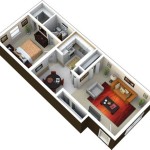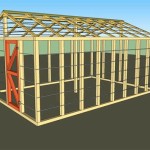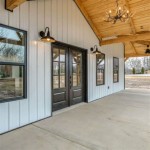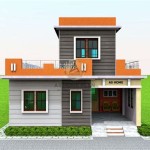Unleash Your Dream Home: Discover Amazing House Design Plans
The pursuit of a dream home often begins with envisioning the architectural possibilities, layout designs, and aesthetic appeal that resonate with individual preferences and lifestyle requirements. House design plans serve as the foundational blueprint for this aspiration, transforming abstract ideas into tangible structural concepts. Navigating the vast landscape of available designs can be overwhelming, but understanding the various categories, functional considerations, and available resources can empower individuals to make informed decisions and ultimately realize their ideal living space.
A house design plan is a detailed set of drawings and specifications that outline the construction of a residential building. It’s more than just a floor plan; it encompasses every aspect of the building process, from the foundation to the roof, including electrical, plumbing, and HVAC systems. A comprehensive design plan ensures that the building project is completed accurately, efficiently, and in accordance with local building codes.
The importance of a well-executed design plan cannot be overstated. It provides a clear roadmap for builders and contractors, minimizing the risk of errors and costly rework. It also allows homeowners to visualize the finished product and make informed decisions about materials, finishes, and layout before construction begins. Furthermore, a detailed plan is crucial for obtaining necessary permits and approvals from local authorities.
Understanding Different House Design Plan Styles
House design plans are broadly categorized by architectural style. Each style offers a distinct aesthetic and may be more suited to particular climates or geographical locations. Familiarizing oneself with these styles is a crucial first step in identifying the most appropriate design for individual needs and preferences.
One prevalent style is the Ranch house plan. Characterized by its single-story layout and horizontal orientation, the Ranch style is often associated with suburban living. These designs typically feature an open floor plan, large windows, and an attached garage, emphasizing accessibility and convenience. Ranch homes are particularly well-suited for individuals with mobility limitations or those who prefer a single-level living arrangement.
Another common style is the Two-Story house plan. Optimizing vertical space, two-story homes offer increased square footage without expanding the footprint of the property. This design is often chosen for families who require multiple bedrooms and living areas. Two-story plans can range in style from traditional Colonial to modern contemporary, offering a wide array of architectural options.
The Craftsman house plan is recognized for its emphasis on handcrafted details and natural materials. Characterized by its low-pitched roof, wide eaves, and exposed rafters, the Craftsman style exudes a sense of warmth and authenticity. These designs often incorporate features such as a covered front porch, built-in cabinetry, and intricate woodwork, reflecting a commitment to quality craftsmanship.
For those seeking a more minimalist aesthetic, the Modern house plan presents a sleek and contemporary design. Characterized by its clean lines, geometric shapes, and expansive windows, modern homes prioritize functionality and simplicity. These designs often incorporate open floor plans, natural light, and sustainable building materials, reflecting a commitment to environmental consciousness.
The Farmhouse house plan evokes a sense of rustic charm and rural simplicity. Characterized by its gabled roof, covered porch, and simple detailing, farmhouse designs are often associated with a comfortable and inviting living environment. These plans typically feature large kitchens, spacious living areas, and plenty of natural light, reflecting a connection to the land and a focus on family gatherings.
Beyond these common styles, a plethora of other architectural options exist, including Victorian, Mediterranean, Colonial, Cape Cod, and contemporary designs. Exploring these diverse styles can reveal unique features and design elements that align with individual aesthetic preferences.
Key Considerations When Selecting a House Design Plan
Choosing a house design plan is a multifaceted process that requires careful consideration of several key factors beyond aesthetic appeal. Functional requirements, budget limitations, site conditions, and local building codes all play a crucial role in determining the suitability of a particular design. A thorough assessment of these factors will ensure that the chosen plan aligns with individual needs and can be successfully implemented.
One of the most important considerations is the functional requirements of the household. Factors such as the number of occupants, lifestyle habits, and specific needs should be carefully evaluated. For example, a family with young children may prioritize a large backyard and a playroom, while a retired couple may prefer a smaller, low-maintenance home with a focus on accessibility. Identifying these specific needs will help narrow down the range of suitable design plans.
Budget limitations also play a significant role in the selection process. The cost of construction can vary widely depending on the size, complexity, and materials used in the design. It is important to establish a realistic budget and choose a plan that aligns with available financial resources. Obtaining multiple quotes from builders and contractors can help estimate the total cost of construction and identify potential cost-saving measures.
Site conditions must also be taken into account. The topography, soil type, and orientation of the property can significantly impact the feasibility and cost of construction. For example, a sloping lot may require extensive excavation or retaining walls, while a poorly drained site may necessitate specialized drainage solutions. Consulting with a geotechnical engineer can provide valuable insights into the site conditions and help identify any potential challenges.
Compliance with local building codes and zoning regulations is another critical consideration. Building codes are designed to ensure the safety and structural integrity of buildings, while zoning regulations govern land use and development. Failing to comply with these regulations can result in costly delays and penalties. It is important to consult with local authorities and obtain all necessary permits and approvals before commencing construction.
Energy efficiency is an increasingly important consideration for homeowners. Choosing a design that incorporates energy-efficient features such as proper insulation, energy-efficient windows, and solar panels can significantly reduce energy consumption and lower utility bills. Green building practices are not only environmentally responsible but also economically beneficial in the long run.
The resale value of the property is another factor to consider, even if there are no plans to sell the house in the near future. Choosing a design that is well-suited to the local market and incorporates desirable features can increase the property's future value. Consulting with a real estate agent can provide valuable insights into local market trends and help identify design choices that will enhance the property's appeal to potential buyers.
Resources for Finding Amazing House Design Plans
The availability of house design plans has expanded significantly in recent years, thanks to the proliferation of online resources and architectural services. Individuals have access to a wide array of options, ranging from pre-designed plans to custom-designed solutions. Understanding the various resources available can empower individuals to find the perfect design for their needs and budget.
Online house plan websites offer a vast library of pre-designed plans in various styles and sizes. These websites typically allow users to search for plans based on specific criteria, such as square footage, number of bedrooms, and architectural style. Pre-designed plans can be a cost-effective option for those who are looking for a quick and easy solution. However, it is important to carefully review the plans to ensure that they meet local building codes and zoning regulations.
Architectural firms provide custom design services tailored to individual needs and preferences. Working with an architect allows for a high degree of customization and ensures that the design is perfectly suited to the client's lifestyle and site conditions. Custom design services are typically more expensive than pre-designed plans, but they offer the advantage of a truly unique and personalized home.
Home builders often offer design-build services, which combine the design and construction phases of the project. This approach can streamline the process and ensure that the design is buildable and cost-effective. Design-build firms typically have a team of architects, engineers, and contractors who work together to deliver a complete turnkey solution.
Home design software allows individuals to create their own house design plans using computer-aided design (CAD) technology. These software programs provide a user-friendly interface and a wide range of design tools, enabling users to experiment with different layouts and design elements. While home design software can be a valuable tool for visualizing ideas, it is important to consult with a qualified architect or engineer to ensure that the design is structurally sound and complies with local building codes.
Home improvement stores often offer house design services as part of their overall product offerings. These services typically involve a consultation with a design specialist who can help homeowners create a functional and aesthetically pleasing plan for their home. Home improvement stores also offer a wide range of materials and supplies, making them a convenient one-stop shop for all aspects of the project.
Local libraries and community centers often host workshops and seminars on house design and construction. These events can provide valuable information and resources for homeowners who are planning a building project. They also offer an opportunity to network with other homeowners and industry professionals.
Engaging with online communities and forums dedicated to home design and construction can provide valuable insights and advice from experienced homeowners and professionals. These platforms offer a space to share ideas, ask questions, and learn from the experiences of others. However, it is important to critically evaluate the information shared online and consult with qualified professionals before making any decisions.
By carefully considering these resources and engaging in a thorough planning process, individuals can confidently embark on their journey to unleash their dream home and create a living space that reflects their unique style and enhances their quality of life.

Unleash Your Creativity 20 Unique House Plan Ideas To Inspire Dream Home

Luxury Plan 5 377 Square Feet 4 Bedrooms Bathrooms 1018 00203

Haystack House Plan Farmhouse Style With Carport

Desert Pines House Plan Four Bedrooms Country Ranch

Flamingo House Plan Country One Story

House Plan 5565 00151 Contemporary 4 211 Square Feet Bedrooms 5 Bathrooms

Charming 4 Bedroom Home With Inviting Porches

Athena House Plan Coastal One Story

Home Floor Plans House Layouts Blueprints

Plan 81383w Central Courtyard Dream Home
Related Posts








